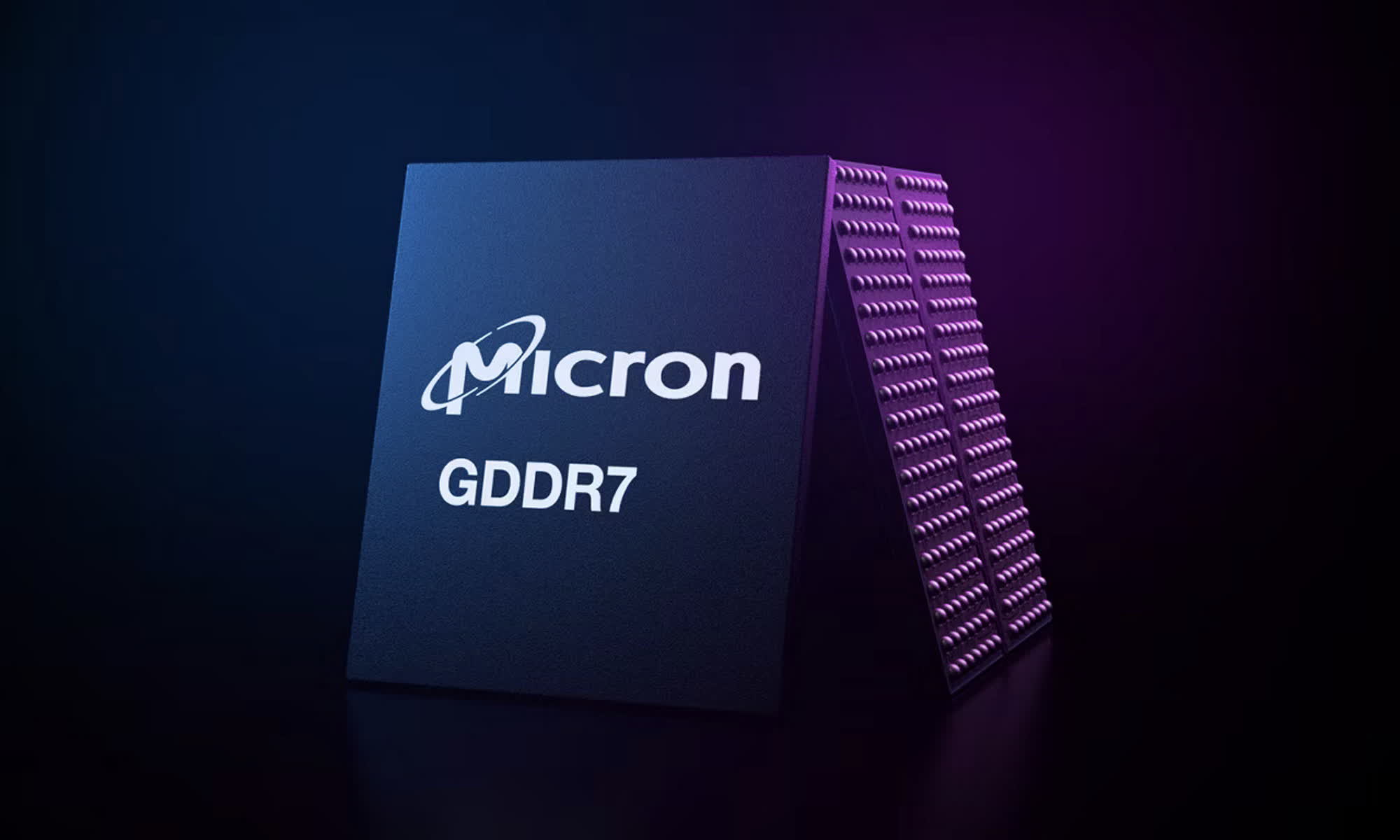Something to look forward to: Micron started sampling GDDR7 chips earlier this month, stating that the new state-of-the-art memory will significantly boost the next generation of graphics processors. A new slide provides additional details about the anticipated performance increase.
Micron’s GDDR7 memory is expected to replace both GDDR6 and non-standard GDDR6X chips currently used in modern GPUs for gaming and AI workloads. The Idaho-based company claims that graphics cards built with GDDR7 will provide over 30 percent more frames per second for both ray tracing and rasterization rendering across the three most common gaming resolutions (1080p, 1440p, and 4K).
According to one of Micron’s official slides (seen above), players can expect “seamless visuals” and significantly better performance with next-generation games. The slide indicates that GDDR7 memory chips can deliver up to a 3.1x improvement over GDDR6 applications and a 1.5x increase over “best-in-class” GDDR6X applications.
Micron also provides some “normalized FPS” gaming benchmarks, comparing today’s video memory technology to GDDR7 at 1080p Ultra, 1440p Ultra, and 4K Ultra settings with unnamed gaming titles.

The GDDR7 hardware appears to excel in ray tracing rendering scenarios, showing a 2.3x FPS increase at 1080p Ultra compared to GDDR6, and a 3.1x increase at 4K. Normalized FPS performance for raster graphics is also improved, with a 1.2x increase at 1080p Ultra and a 1.7x increase at 4K Ultra (we assume Ultra settings in such games, where memory speed may be a larger factor).
Nvidia GPUs in the GeForce 40 series use GDDR6X memory chips manufactured by Micron, except for the RTX 4060 and RTX 4060 Ti models, which use GDDR6. The Blackwell architecture is expected to debut in consumer/gaming graphics cards by the end of 2024, with the flagship GeForce RTX 5090 model likely incorporating the GDDR7 memory chips that Micron recently started sampling.
Speculation about actual performance achievable by Nvidia’s upcoming gaming GPUs is rampant. Based on current information about Blackwell, it is assumed that the GeForce RTX 5090 could be up to 42 percent faster than the GeForce RTX 4090 in rasterization and up to 48 percent faster for ray traced gaming.

